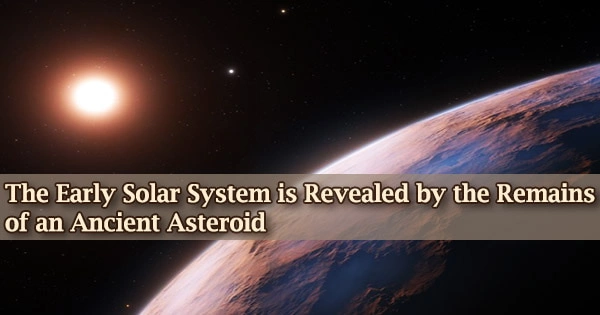A previously accepted timetable for catastrophic events in the early solar system has been upended by researchers. Planets and other smaller celestial things were created around 4.5 Ga (giga-anum, or billion years ago) as a vast disc of dust and ice collapsed around our newly born star.
The eight well-known planets then underwent a chaotic and violent era of collisions and impacts as they shaped their orbits to resemble the harmonious system we see today. The Sun, our star, and everything gravitationally attached to it, including the moons Mercury, Venus, Earth, Mars, Jupiter, Saturn, Uranus, and Neptune, are what make up our solar system.
There are also dozens of moons, as well as millions of asteroids, comets, and meteoroids. There are more planets than stars in the universe outside of our own solar system. The Milky Way has thousands of planetary systems orbiting other stars, and new planets are continually being identified. The Milky Way galaxy is just one of potentially 100 billion galaxies in the cosmos, and most of the hundreds of billions of stars within it are estimated to contain their own planets.
Geological and geochemical evidence suggests that the Earth-Moon system went through a period of frequent and catastrophic collisions by asteroids and other bodies roughly 600–700 million years after the solar system’s formation, although still very early in its lifetime. The late heavy bombardment (LHB) phase is the name given to this time frame.
Though it was previously believed that this period began very abruptly, a study team from Hiroshima University and The University of Tokyo in Japan has discovered evidence suggesting that the bombardment period may have begun much earlier and waned over time. On August 26, the group published its findings in Earth and Planetary Science Letters.
“According to Apollo’s lunar rock studies from the 1970s, the Earth, Moon, and the entire inner solar system are thought to have suffered from numerous meteoritical impacts at around 3.9 Ga. This event is regarded as a key process during the early evolution of our planet,” said Mizuho Koike, an author of the study and an assistant professor from The Graduate School of Advanced Science and Engineering at Hiroshima University.
“However, the validity of the LHB idea is being questioned recently. To settle this debate, a solid database of the ‘impact ages’ is required.”
According to Apollo’s lunar rock studies from the 1970s, the Earth, Moon, and the entire inner solar system are thought to have suffered from numerous meteoritical impacts at around 3.9 Ga. This event is regarded as a key process during the early evolution of our planet.
Mizuho Koike
To test if they could confirm the length of the LHB era, the scientists first constructed this database using rocks that were discovered on Earth and were thought to have come from the huge, extinct asteroid Vesta.
Vesta, like the Moon, would probably have similar signs of the LHB period around 3.9 Ga if the solar system had actually experienced it. The researchers discovered a record of strikes that occurred 300–500 million years earlier than anticipated.
“We found that the rocks from Vesta recorded the multiple impacts that occurred between 4.4 to 4.15 Ga, clearly earlier than the predicted peak of LHB at ~3.9 Ga. In contrast, no impact evidence was identified at 3.9 Ga or later. These findings suggest that Vesta (and probably other asteroids as well) did not record the LHB. Instead, they experienced massive impacts at the earlier stage,” said Koike.
Although Koike and her coworkers intend to further look into the chronology of the early solar system, it is yet unclear what this means for the LHB period as a whole.
“Our study reveals that the previously expected impact model was not correct, at least on Vesta,” Koike said.
“Extrapolating this to the wider solar system, the concept of LHB may not be appropriate to the planets’ evolutions, including to the Earth and Moon. To verify such an examination, we are planning to investigate the impact histories on other asteroids and planetary materials by applying our present analytical techniques.”
The team hopes that by doing this, they will be able to expand their database and, ultimately, gain a clearer view of the distant past of our solar system.





